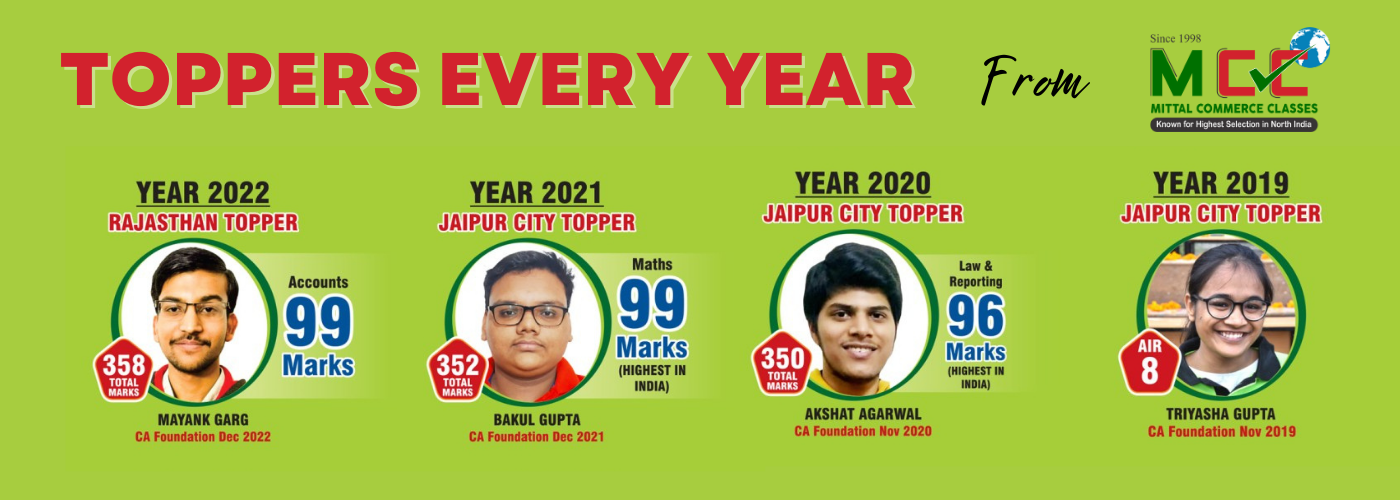Chartered accountancy is an Institute in itself. Once you complete your CA Course you are not only capable of a job at a good institute but you also become a job giver. After completion of the course, you always have the option to choose whatever suits you the best. You become a member of the Institute of Chartered accountant of India (ICAI). You get to use the CA prefix in front of your name and call yourself a CA. There is an endless number of opportunities once you become a CA. Every industry and business needs a CA to maintain their Accounts and Finances. You won’t find a single industry or a company where CAs are not required.
There are primarily three opportunities you can explore once you become a CA.
- Practice CA
- Entrepreneurship
- Join CA Firms.
Practicing CA-
If you are thinking of practicing CA as a sole proprietor it is an obsolete concept because of fierce competition and client pressure. Hence it is advisable to start a firm with the partnership of a minimum of 4 Chartered Accountants. You can also start an LLP firm by the 2008 LLP Act. CAs who start their firm has no upper limit for their growth but there is fierce competition among such small firms.
A chartered accountant can enter into practice with the following professionals-
- A company secretary in practice
- Chartered Accountant in practice.
- Cost Accountant in practice
- Architect Professional
- Advocate as defined by the bar council of India.
- Engineer ( Chartered)
- Actuary Professional.
If you are going to decide to start a practice start filing IT returns, GST returns, TDS returns.
Job as a Chartered Accountant-
On completion of the training, the applicants need to obtain membership from the ICAI before they can start practicing as a CA. A member yearning to practice in India or abroad needs to get a Certificate of Practice from the ICAI. The yearly fee of which is Rs. 400. After the membership is taken the practicing member is allowed to work in any other business or occupation without permission from the council. They are only allowed to work in areas as specified in the CA regulations. Being a Professional course CAs get lots of good opportunities with the best salary in hand. There has been a huge increase in the scope of CA professionals. Meanwhile, the up-gradation in the economy is summing up challenges for CAs to upgrade their knowledge and skills in the field.
Specialized roles of CAs are as follows:
- Auditor
- Share Valuer
- Financial Reporting
- Management & Corporate Consultancy
- Tax Advisor
- Management Accounting
- Cost Accountant
- Company Liquidator
- GST Expert
- Corporate Financing
Financial Accountant – A CA can carry out the below-given activities as a Financial Accountant.
- Operate Account
- Do Internal audits
- Deal with salaries & wages
- Tax management
- Accounts payment and invoice dispensation
Cost Accountant – A CA is responsible for the below activities if he is working as a Cost Accountant.
- Budgeting & budgetary control
- Forecasting
- Keeping a track of Expenditures to make sure sure that the costs are in control.
Tax Manager – CAs are specialists in the management of tax and properly optimizes the financial structure of a company. They check the tax associations of the new schedules and alters the company’s financial arrangements. CAs act as the role of advisors for the tax impacts on performance objectives.
Auditor – CAs perform internal audits to observe the management processes as well as internal controls to make sure the precision of records and propriety of controls. They check allegiance to corporate policies & procedures. Being a Tax Auditor, CA checks the tax liability of the taxpayer. Government organizations have tax auditors.
Consultant – CA’s role as a consultant related to the below-mentioned fields:
- Analyzing share valuation for takeovers, issuing of capital shares, alliance with other organizations.
- Secretarial practice & processes
- Advising about corporate law for the company’s structure, liquidation, and financial facets
- Project agenda and guidance on the financial resource.
- Counseling on business extension, profit improvement, joint venture programmes, and so on.
Salary of CA –
The salary of a CA depends upon his knowledge, skills, experience and capabilities. The average salary of CA professionals is between 6 to 30 lakhs whereas, the international packages range up to 75 lakhs.
CA Salary Package Industry-wise-
The Big 4-
KPMG, E&Y, Deloitte, and PWC are the 4 biggest firms. A CA Student always aspires to be in these companies. However, there is immense work pressure on the CA students in these firms. But for those who are ardent on getting exposure and experience can endure in these firms for a long. The aggregate salary of the freshers here ranges from 6 to 8 lakhs. The salary package for experienced professionals ranges up to 25 lakhs.
CA Firms
The candidates who wish to own their firms after a few years of experience the CA firms give a great deal of exposure to them. The freshers here get the experience to deal with clients and the income tax officers. The CA firms give a salary of around 3-8 lakhs.
IT Industry
A CA in an IT industry can experience the job with an attractive salary package, without any extra workload. But, this does not improve the knowledge of the chartered accountants.
Public Sectors
The public sector units such as ONGC, BHEL, BSNL, etc. hire a huge number of freshers from campus placements. The students are pre-selected based on their marks (55-60%). The average salary offered by these companies ranges from 7-15 lakhs.
Marico/P&G/HUL/RB
These companies shortlist the aspirants falling under the top 50 list The starting salary offered by them ranges between 18-28 lakhs.
Life after pursuing the CA Course get easier. You are presented with tonnes of opportunities from the public to private sectors, in India and Abroad. You can take up a job in a big company or a CA firm or go on to start your practice and every decision you make will come up with its pros and cons. There is no good option here. It all comes down to what is it that you want to do with your career and how?
















